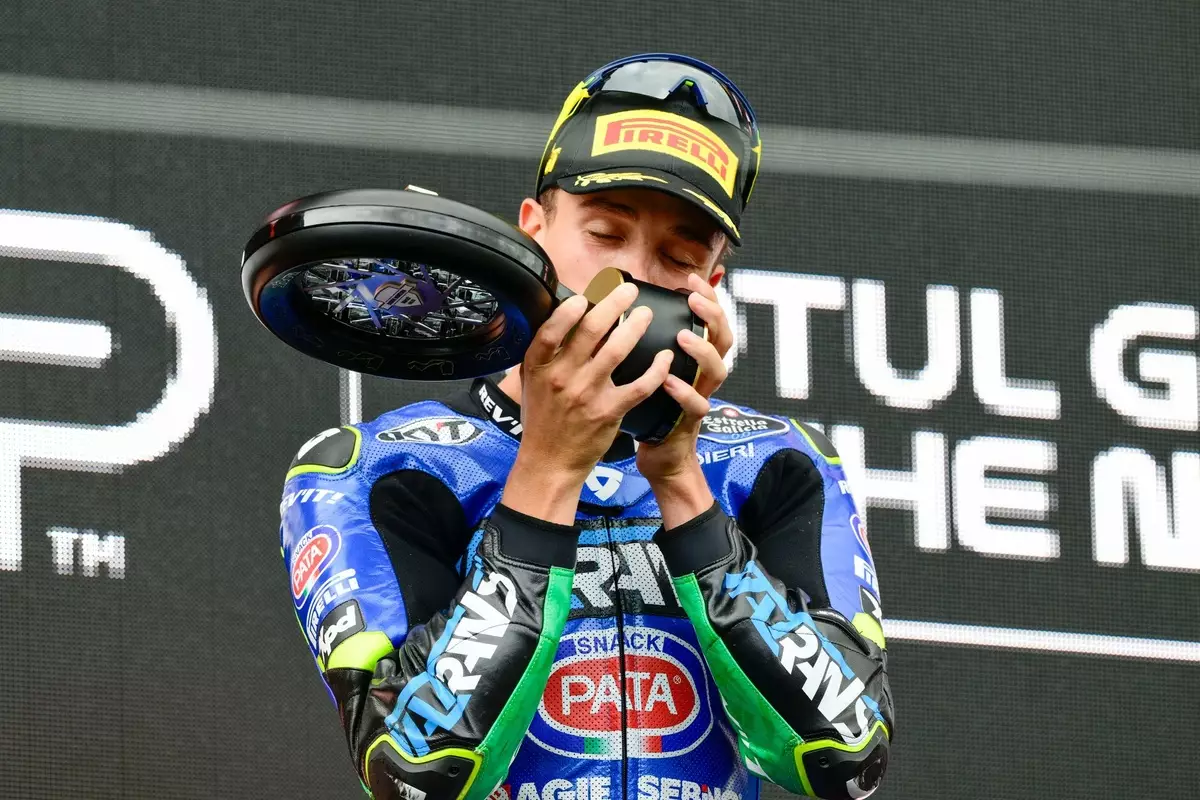Diogo Moreira’s recent victory at Assen is more than just a statistical achievement; it’s a bold declaration of his burgeoning talent and potential to redefine his racing destiny. As the first Brazilian rider to clinch a Moto2 win, Moreira’s triumph symbolizes the resurgence of motorcycle racing in South America—a continent eager to reclaim its place on the global stage. His seamless execution from pole to checkered flag underscores not only his technical prowess but also his mental resilience, qualities essential for the leap to MotoGP.
His performance throughout recent races paints a compelling picture: a rider who has matured amid adversity. After a tentative start to the season, Moreira has been on a tear, securing three podium finishes in four races and accumulating more points than his contemporaries. This rapid ascent highlights a pivotal shift—the emergence of a rider who combines raw speed with strategic racing intelligence. His motivation appears laser-focused, signaling a desire not merely to compete but to excel at the highest level of motorcycle racing.
The significance of his victory extends beyond the immediate race results. It epitomizes a moment of symbolic triumph for Brazilian motorsport, a country with a rich racing history yet a comparatively sparse presence in current MotoGP line-ups. His success ignites national pride and creates a ripple effect, inspiring a new generation of riders and attracting sponsorship interest. His victory isn’t just personal; it’s a catalyst for broader recognition of Brazil’s talent reservoir in motorcycle racing.
Pathways to the Pinnacle: Navigating the MotoGP Transition
The road from Moto2 to MotoGP is often fraught with difficulties, political intricacies, and team negotiations. Moreira’s recent performance has placed him in a prime position to make the leap, but the decision hinges on a complex interplay of contractual arrangements, team dynamics, and manufacturer interest. His management’s strategic maneuvers are critical, given that several teams are closely monitoring his progress with keen intent.
Current rumors suggest he might join Pramac Yamaha—a move that would pair him with Toprak Razgatlioglu. Such an arrangement offers a fast track into the premier class, with a competitive team that values fresh talent. However, this scenario implies altering the current lineup, including the potential departure of riders like Jack Miller and Miguel Oliveira. These negotiations are delicate: Oliveira’s contractual performance clauses and injury history add layers of uncertainty, making his future with Honda or other manufacturers less predictable.
Yamaha’s recent partnership with Brazil via Moreira’s test on the Yamaha R1 signals a long-term interest in cultivating South American talent. If Moreira joins Yamaha’s ranks, it would exemplify a strategic investment in expanding the brand’s presence in emerging markets. Pairing Razgatlioglu and Moreira could create a duo that embodies youth, speed, and market appeal, transforming the team into a de facto junior MotoGP squad—a prospect that aligns with Yamaha’s vision of nurturing upcoming stars.
Despite this promising outlook, the ideal scenario for both Moreira and his current team, Pramac, is a gradual progression—perhaps a final year in Moto2 under Pramac’s banner before stepping into MotoGP in 2027. This gradual approach allows for growth and maturity, minimizing risks associated with abrupt jumps, especially considering the intense competition and pressure at the highest level.
Other potential destinations include Aprilia and Honda, both of which are embroiled in their own strategic puzzles. Aprilia’s interest in placing Moreira alongside Trackhouse suggests an expansion of their talent pipeline, while Honda’s current internal upheaval leaves its future rider lineup uncertain. These options introduce complexity but also showcase the increasing demand for emerging talents like Moreira, who could be decisive for multiple manufacturers seeking fresh blood.
The Strategic Calculus and Personal Ambitions
Moreira’s recent surge isn’t merely about talent; it’s about positioning himself in a fiercely competitive environment. His recent partnership with Yamaha Brazil and the test at Balaton are hints of a larger plan—one that integrates his personal goals with manufacturer strategies. Such moves demonstrate a shrewd understanding of the importance of backing from manufacturers for a rider’s long-term prospects.
Despite the allure of jumping straight into MotoGP, Moreira’s expressed preference for stability and comfort, should the opportunity arise, reveals maturity and insight. He recognizes that rushing into the top flight without adequate preparation could backfire, undermining his career in the long run. His desire to stay with Pramac in Moto2 for another year signals patience and a strategic mindset, qualities that are often underrated in a sport that prizes speed above all.
The decisions unfolding in these negotiations underline a broader truth: success in motorcycle racing depends as much on timing and tactical partnerships as on raw talent. Moreira’s story, still unfolding, represents a convergence of ambition, market forces, and genuine skill—elements that could elevate him to the elite echelon of the sport. His trajectory is not predetermined, but what is clear is that he is no longer flying under the radar; he is now on a collision course with greatness.


Leave a Reply